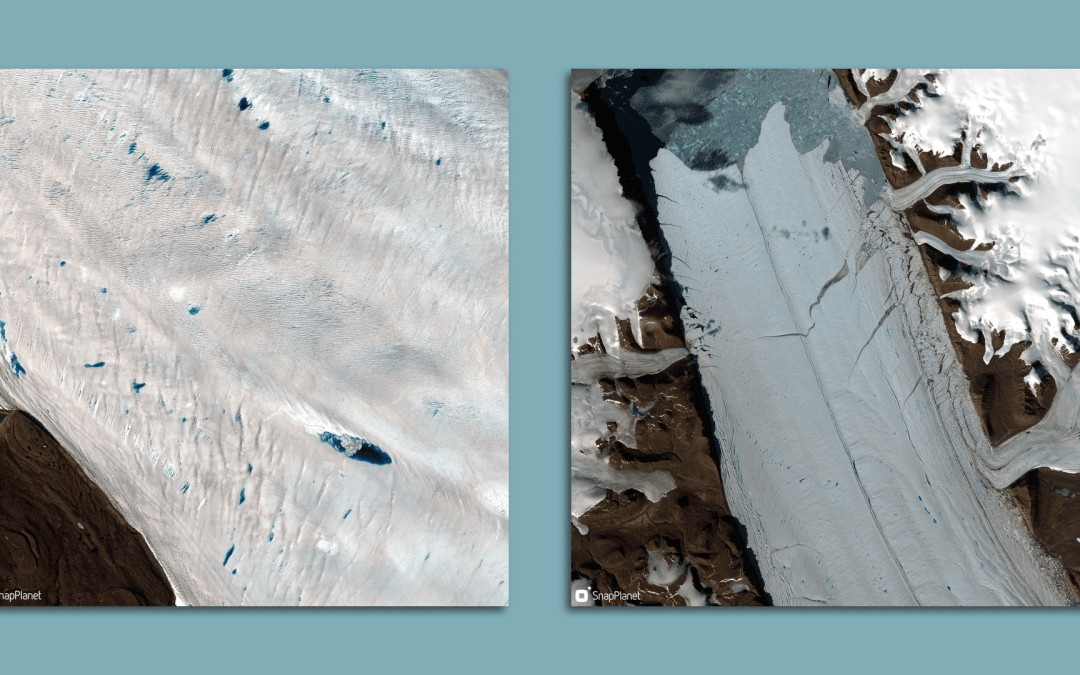The Greenland Ice Sheet saw a sharp spike in the rate and extent of melting last week, with 18 billion tons of water running into the North Atlantic in just three days, Andrew writes. Why it matters: Greenland’s melting ice is the top annual contributor to global sea level rise. The rate and extent of ice loss there in the next few decades and beyond will determine the fate of coastal cities from Hong Kong to Miami.
Driving the news: An uptick in ice loss that occurred during the July 15-17 period sent enough water careening off the ice sheet to fill 2.4 million Olympic-sized swimming pools, said Ted Scambos, a climate scientist at the University of Colorado at Boulder, in an interview.
- Put another way, it was the equivalent of covering all of West Virginia in four inches of water per day, for a total depth of 1 foot.
- While this sounds extreme, it doesn’t rank as the biggest melt surge that scientists have witnessed in recent years. Periods of exceptionally mild weather have become relatively common since about 201o.
Context: “Since 2010, especially 2012, there have been lots of very extensive melt events,” Scambos said, noting that northern Greenland, which was included in the most recent event, has been seeing increasing intrusions of milder air and higher melt rates.
- “This was a widespread event,” he said. “Overall, it continues to indicate that Greenland is trending towards more melting than was the case in the 1980s and 1990s.”
The intrigue: Other researchers told Axios that the extent of the recent melting has been particularly noteworthy.
- William Colgan of the Geological Survey of Denmark and Greenland said in an email that temperatures got warm enough for snow to melt at East GRIP, a scientific research site, temporarily preventing re-supply flights from landing there due to the softness of the snow and ice.
What’s next: Studies show that how much greenhouse gases are added to the air through the burning of fossil fuels will largely determine the amount of ice loss from Greenland, and the potentially even greater ice melt to come from Antarctica.
- The greater the emissions, the more vulnerable the ice sheets will become.
The bottom line: “A consistent loss of ice year after year is unfortunately the new normal in Greenland and the question that we scientists now ask ourselves is: How much will Greenland lose this year, not will Greenland net lose or gain ice this year?” said Ruth Mottram, a climate scientist at the Danish Meteorological Institute, via email.

